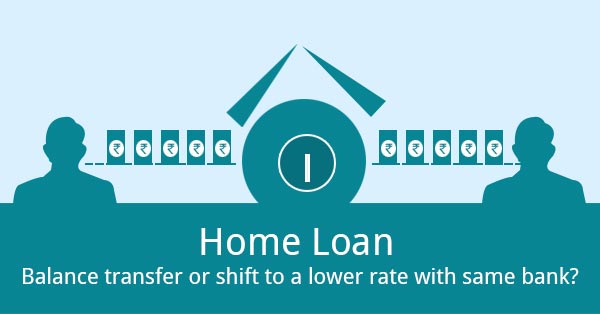Home Loan: Balance transfer or shift to a lower rate with same bank?
Amit Kumar had taken a home loan at an interest rate of 12.5 per cent. He has been paying the EMIs regularly for the last few years. Now, he finds out that new borrowers are getting home loans at a rate of 9.90 per cent. What should he do to bridge this gap of 2.65 percentage point?
So, what should Amit do now? One of his friends advised him that he should go for balance transfer with some other bank or switch to lower rates with his existing lender.
Experts say that customers who are paying more than one per cent interest rates as compared to that being offered to new customers, they should either go for balance transfer or switch to lower interest rate.
Balance transfer
When old borrowers switch their outstanding loan to another bank offering lower interest rate, it is called balance transfer. However, the process is like availing a new loan and involves a lot of paper work as well as additional cost.
If you have taken a home loan of Rs 25 lakh, the stamp duty, legal and processing charges may be around Rs 8,000-10,000 or even higher. While some banks charge a fixed amount, say between Rs 5,000 and Rs 10,000, others charge 0.5% of loan amount.
Before opting for balance transfer, you should make sure that your new lender passes on the benefits to customers whenever RBI announces a rate cut.
| Bank | Processing fee |
| HSBC Bank | 1% of loan amount |
| IDBI Bank | 1% of loan amount |
| ICICI Bank | 0.5-1% of loan amount |
| HDFC Bank | 0.5% of loan amount |
Switching to lower rate in same bank
An old home loan borrower also has the option of switching to a lower interest rate in the same bank. For the rate reset, one has to pay switching charges that vary from 0.5% to 1% of the outstanding amount.
Many banks calculate the charge on the basis of the difference between market rate and interest rate that an existing customer is paying. Most banks charge around 25-50 basis points (bps) or 0.5-1 per cent of the outstanding amount.
After you get a rate reset, you can opt for a lower EMI or get your loan tenure reduced.
Do the maths
Before taking a final decision, you must do all the calculations. If you find that the one-time charge for switching to lower rate with the same lender is higher than the cost involved in balance transfer, you should opt for the latter.
If you have paid your EMIs in time, any new bank will happily offer you a lower rate as it would not want to lose on the business.
If you are going for balance transfer option, make a comparison of total outgoing, study the processing fee and then take a decision.
You will stand to benefit only if your outstanding is high and you have long loan payment tenure. If the remaining tenure is short, pay higher installments and put off your debt burden as early as possible.





